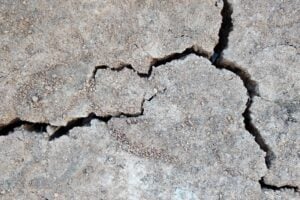Spotting Foundation Problems in Old Homes: Essential Tips for Homeowners
Table of Contents
ToggleOver time, soil movement, moisture, and natural wear can cause cracks, uneven floors, or shifting walls. These issues can point to serious structural damage if ignored. Knowing the common foundation problems in older homes and how to spot them early can save you from expensive repairs later. Let’s look at what to watch for and when it may be time to call in the experts.
Surface Damage: Concrete Spalling
- One of the most noticeable foundation problems in older homes is concrete spalling. This occurs when the surface of the concrete begins to peel, chip, or flake away. The main culprit behind this issue is corrosion of the steel reinforcing bars inside the concrete. As these bars rust, they expand, forcing the surrounding concrete to crack and break off.
Beyond being unsightly, spalling weakens the foundation’s durability and strength. If left untreated, it can spread quickly, creating larger sections of compromised concrete. Prompt repairs and protective coatings are necessary to restore the surface and prevent further deterioration.
Moisture Signs: Efflorescence
- Another common issue you might notice is efflorescence, the white, chalky residue that appears on concrete or masonry surfaces. It forms when water seeps through the foundation, dissolving natural salts inside the concrete, and then evaporates, leaving salt deposits behind. While efflorescence itself does not cause direct structural damage, it is an early warning sign of moisture intrusion.
Persistent moisture can eventually lead to more serious issues like mold, mildew, wood rot, or even foundation weakening. Treating efflorescence involves addressing the source of water and ensuring your foundation has proper drainage and sealing.
Structural Red Flags: Foundation Cracks
- Cracks in the foundation are some of the most concerning problems you’ll find in older houses. These can range from tiny hairline fractures to wide, visible gaps. The causes vary; soil shifting, house settling, or fluctuations in moisture levels are common triggers. Not all cracks are structurally severe, but their type and direction matter.
Vertical cracks often point to normal settling, while horizontal or diagonal cracks can suggest serious pressure or instability. A professional evaluation is essential to determine whether the cracks need sealing, reinforcement, or more advanced repairs. Ignoring them could result in costly structural damage later.
Gradual Wear: Foundation Wall Deterioration
- Over time, exposure to weather, neglect, and natural aging can cause foundation walls to weaken. Signs of deterioration include crumbling concrete, fragile mortar joints, or decay in wood used for post and pier systems.
These issues reduce the load-bearing capacity of the foundation, putting the stability of the entire home at risk. Crumbling walls or weakened joints can escalate quickly if not repaired, leading to dangerous conditions. Regular inspections and timely reinforcement can keep your walls strong and extend the life of your foundation.
Hidden Trouble: Cracks in Concrete Slabs
- Cracks in concrete slabs are another frequent problem in older homes. These cracks may appear due to shrinkage during curing, expansion and contraction from temperature changes, or shifting soil beneath the slab. Small hairline cracks are often harmless, but wider or spreading cracks could point to deeper structural instability.
Homeowners usually discover these during renovations, especially in garages or basement floors. Large slab cracks may require professional sealing, leveling, or even slab replacement, depending on the severity. Keeping an eye out for these signs helps address them before they compromise your home’s stability.
Wooden Foundations: Post and Pier Weakening
- Older homes built with post and pier or cripple wall foundations are especially vulnerable to wood deterioration. Over time, wooden posts and piers may rot, weaken, or shift due to water exposure, termites, or simple wear. When these supports fail, homeowners often notice uneven floors, sticking windows, or doors that don’t shut correctly.
In severe cases, collapsing posts and piers can cause serious safety hazards. Repairing or replacing damaged posts and reinforcing cripple walls with bracing can significantly improve both stability and safety in these types of older structures.
Final Thoughts: Protecting Older Homes from Foundation Issues
- Foundation issues are common in older homes, but that doesn’t mean they are unmanageable. Problems such as spalling concrete, efflorescence, cracks, wall deterioration, slab damage, and weakened posts all have solutions when caught early. The key is regular inspections, proactive maintenance, and addressing issues before they grow worse.
If you own or plan to purchase an older property, investing in a professional foundation inspection is one of the best ways to safeguard your home. Staying ahead of these problems not only protects your investment but also ensures the safety and longevity of the place you call home.

Our experts at Crack-X will inspect your property and take the right steps to fix your foundation. Crack-X is a civil structure foundation repairs company proudly serving Maine and New Hampshire. We fix foundation cracks using trusted methods and quality materials to ensure long-lasting results. Whether you’re dealing with minor cracks or need help deciding between foundation repair vs foundation replacement, our team is here to help. Call us today at (877) 727-2259 for a free consultation.

